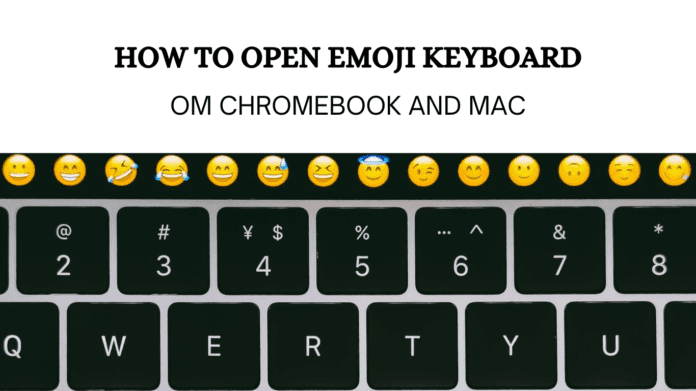Emojis have become a universal way to express emotions in our digital conversations. They add personality, humor, and clarity to our texts— helping us say more with just a symbol.
Well, even though we almost use them in all our digital conversations, do you know all the ways to unlock their full potential on your devices?🤨
What??😱 Still not, then don’t worry–In this guide, I’ll walk you through the easiest ways how to open emoji keyboards, and customize shortcuts, to bring some extra personality to your conversations. So, what are you waiting for, just start reading the article. 😉
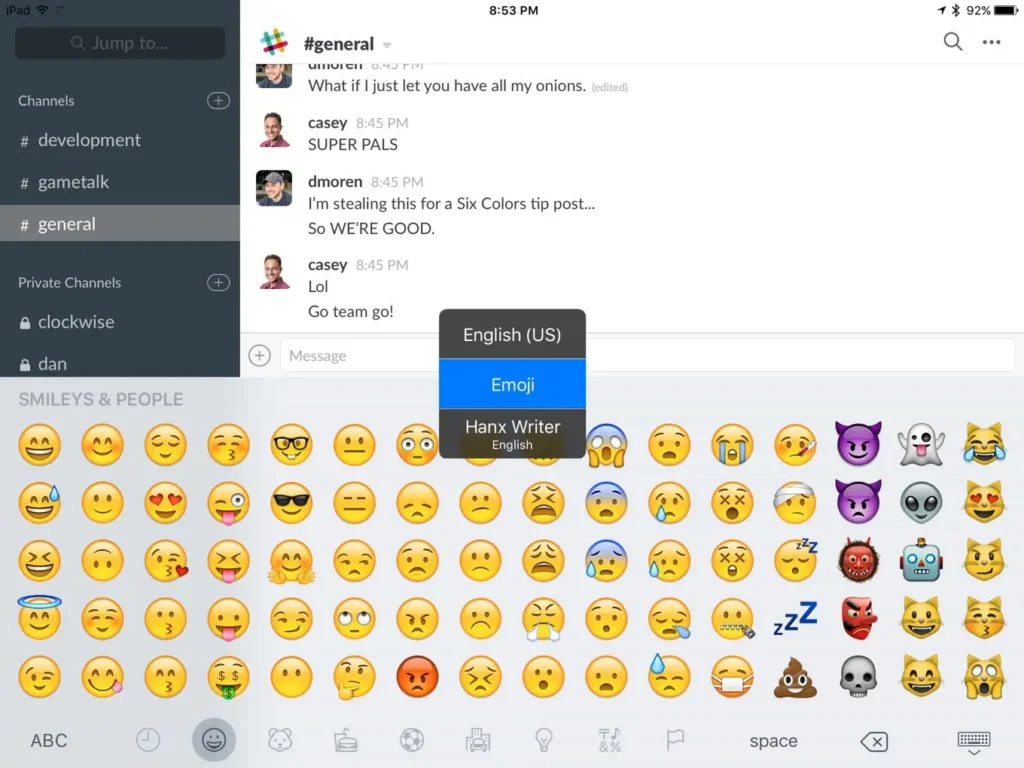
Why Do We Love Emojis?
Emojis are like little mood boosters for our messages–they help us show feelings and make our texts more lively. Instead of typing out “I’m happy,” a smiley face says it all. Therefore, it’s not wrong to say that emojis also clear up confusion. A thumbs-up shows approval quickly, so there’s no need to explain.
They make our chats more fun and personal. Instead of just words, emojis add a splash of personality. They indeed help us express emotions and keep our conversations interesting. In short, emojis make texting more engaging and human.
Related: How to Unlock Your Keyboard?
How To Open the Emoji Keyboard on a Laptop (Windows 10)?
If you’re using a web browser and want a quick way to add emojis without remembering shortcuts, you can use the right-click method. It’s a simple and direct way to access emojis while typing online. However, if you are really keen to know about other methods as well, then we have also enlisted other ways to help you open the Emoji keyboard on your Windows 10 PC/Laptop.
Using a Shortcut
- Click where you want to insert the emoji.
- Press Windows Key + . (period) or Windows Key + ; (semicolon).
- Choose your emoji by clicking on it.
Using the On-Screen Keyboard
- Right-click the taskbar and select the ‘Show touch keyboard button’.
- Click the touch keyboard icon in the taskbar.
- Tap the smiley face to open the emoji keyboard.
- Select your emoji.
How To Open Emoji Keyboard on a Laptop (Windows 11)?
Windows 11 makes it easy to access emojis with simple shortcuts or by using the touch keyboard. Here’s how you can open the emoji keyboard on your laptop:
Using a Shortcut
- Click where you want the emoji.
- Press WIN + . (period) or WIN + ; (semicolon).
- Select your emoji from the pop-up menu.
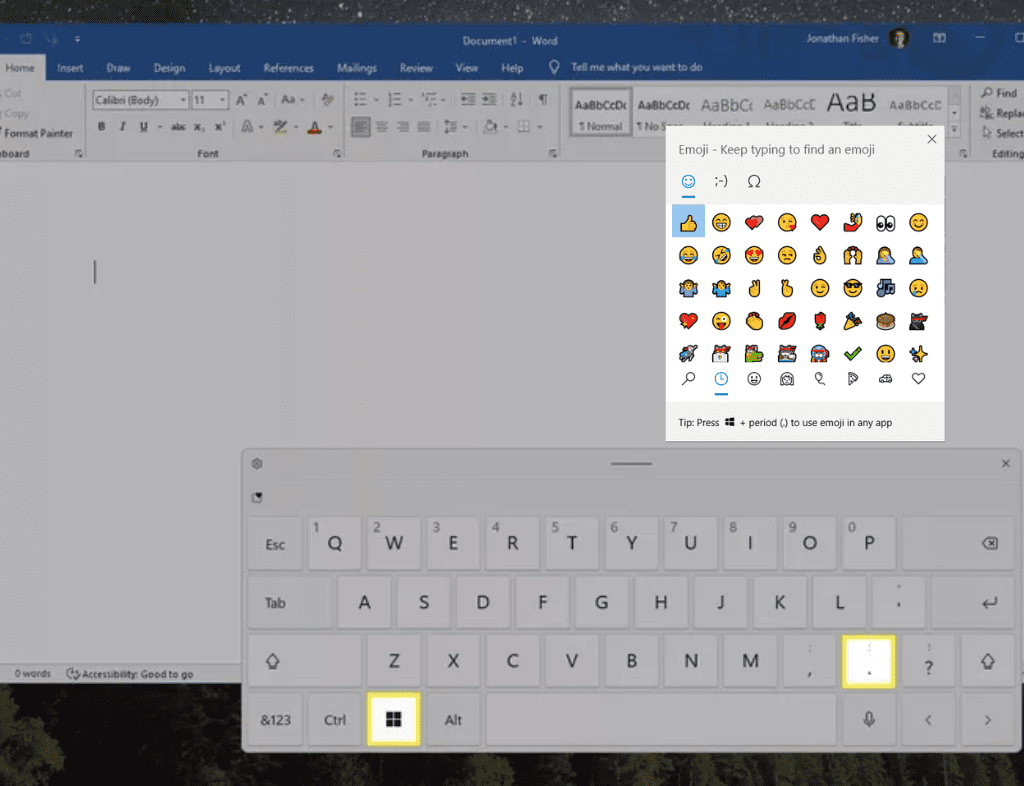
Using the Touch Keyboard
- Right-click the taskbar and select ‘Taskbar settings’.
- Enable the touch keyboard option.
- Click the touch keyboard icon in the taskbar.
- Tap the smiley face to open the emoji keyboard.
- Choose your emoji.
How To Open Emoji Keyboard on a MacBook?
You can use a keyboard shortcut, the menu bar, or even the Touch Bar to switch to the emoji keyboard on your MacBook. If you still need clarification about how, then here’s a quick guide for you.
Using a Shortcut
- Click where you want the emoji.
- Press Command + Control + Spacebar.
- Choose your emoji by clicking on it.
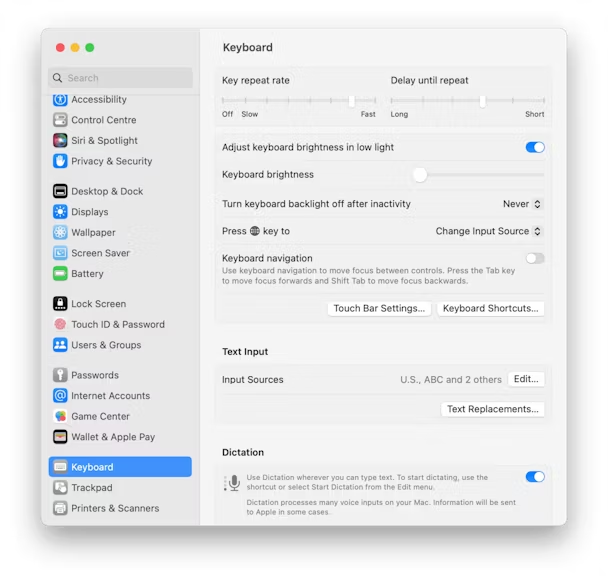
Using the Menu Bar
- Click the Apple icon in the top-left corner.
- Go to ‘Edit’.
- Select ‘Emoji & Symbols’.
Using the Touch Bar
- Open an app that supports emoji.
- Find the smiley face icon on the Touch Bar.
- Tap the emoji icon and select your emoji.
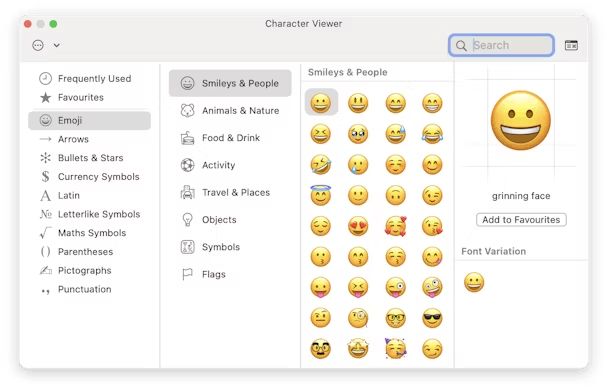
How To Open Emoji Keyboard on a Chromebook?
Do you want to add a little fun to your messages or emails on a Chromebook? Then, you can use emojis to silently express your feelings and make your texts more engaging. Here’s how you can easily access the emoji keyboard on your Chromebook:
- Using the Trackpad
- Tap the trackpad with two fingers.
- Select “Emoji” from the menu that appears.
- Using a Keyboard Shortcut
- Press the Search, Shift, and Space keys simultaneously.
- Using the On-Screen Keyboard
- If in tablet mode, flip the screen to open the on-screen keyboard.
- Tap the smiley face icon at the bottom.
- If the keyboard doesn’t appear, tap a text field to open it.
How To Customize Emoji Shortcuts?
Customizing emoji shortcuts lets you access your favorite emojis quickly. This can surely make typing more efficient and fun. Here’s how you can create personalized emoji shortcuts on different devices.
On MacBook
- Open System Preferences and go to Keyboard.
- Click the Text tab.
- Add shortcuts for frequently used emojis by typing a shortcut in the Replace field and the emoji in the With field.
- Press Enter to save the custom emoji shortcut.
On Windows 10/11
- Open any text field and press WIN + ; or WIN + . to open the emoji keyboard.
- Search for the emoji you want to frequently use.
- Copy the emoji and go to Settings > Time & Language > Typing.
- Add a custom text shortcut under Autocorrect settings to trigger your favorite emoji.
On Chromebook
- Go to Settings and search for Keyboard.
- Scroll down and enable the Emoji picker.
- Press Search + Shift + Space to access the emoji panel.
- Set up a custom text replacement shortcut for emojis in the Input Method settings.
Related: How To Fix AirPods That Got Wet?
How To Use Emojis With Third-Party Applications?
Emojis aren’t just limited to your phone or basic messaging apps. Many third-party applications also allow you to spice up your conversations or documents with emojis. Here’s how to easily access emojis on some of the most popular platforms.
1. Slack
- Open any chat or message box.
- Click the smiley face icon to open the emoji panel.
- Select your desired emoji or type: followed by the emoji name for quicker access.
2. Discord
- In any text field, click the smiley face icon to bring up the emoji menu.
- Type: and start typing the emoji name for auto-suggestions.
- You can also use custom emojis if you’re on a server that supports them.
3. WhatsApp Web
- Click on any chat.
- Click the emoji icon next to the text input box.
- Choose your emoji from the menu or type a colon followed by the emoji name for a quick search.
4. Google Docs
- Place your cursor where you want to add an emoji.
- Click Insert in the menu bar, then select Emoji.
- Pick an emoji from the pop-up panel or search for it by keyword.
5. Zoom
- In a meeting chat, click the Reactions button.
- Choose an emoji reaction or click the emoji icon in the chat box to add an emoji to the text.
Different Device’s Emoji Keyboards Comparison
| Device | How to Open Emoji Keyboard | Customization Options | Special Features |
| MacBook | Cmd + Ctrl + Space | Limited customization; frequent emojis | Kaomoji and symbols available |
| Windows 10 | Win + . (Period) or Win + ; (Semicolon) | No built-in customization; history saved | Supports GIFs and symbols |
| Windows 11 | Win +. (Period) or Win + ; (Semicolon) | Customization options for skin tone | Enhanced emoji panel with GIFs and clipboard |
| Chromebook | Right-click in any text field > Select “Emoji” | No customization; use Google Keyboard | Kaomoji and special characters |
| iPhone/iPad | Tap the globe or emoji icon on the keyboard | Skin tone and emoji selection | Memoji and Animoji |
| Android | Tap the emoji icon on the virtual keyboard | Skin tone and custom emojis (Gboard) | Emoji Kitchen (sticker combinations) |
Advanced Emoji Usage Tips
Even though the traditional emojis are fun, but do you know you can take them to the next level just by learning some advanced tricks?
One cool thing you can do is create custom emojis. Many apps, such as Slack or Discord, allow you to upload your own images to use as emojis. This gives your conversations a personal touch. Moreover, you can even mix emojis on certain keyboards including Gboard’s Emoji Kitchen to create new combinations.
Another tip is knowing how to use emojis in professional settings. Although it’s tempting to throw in a smiley everywhere—but you must try to keep it balanced.
Emojis can help make your messages feel friendly or add clarity. Just remember to use them sparingly in formal emails or reports. For instance, a thumbs-up emoji can be a quick way to show approval without writing a long response.
Conclusion
Emojis have become a universal language of their own, it has turned our simple texts into vibrant, expressive messages. From adding a dash of fun to your chats to enhancing your professional emails, emojis offer a playful way to communicate. So go ahead, use these tips discussed in this article to make your messages pop and let your emojis talk!
Frequently Asked Questions (FAQs)
Can I use the emoji keyboard to insert GIFs and symbols?
Yes. The emoji keyboard also includes a selection of GIFs and symbols. You can access these by clicking on the icons at the top of the emoji panel.
How do I navigate through different emoji categories?
Click on the icons at the bottom of the emoji panel to switch between categories such as smileys, animals, food, and more.
Can I customize the emoji keyboard settings?
Although the emoji keyboard itself does not have extensive customization options, you can change your keyboard settings in the Windows settings menu to adjust things like language and input methods.
What should I do if the emoji keyboard shortcut doesn’t work?
If the shortcut doesn’t work, make sure your Windows is up to date. You can also check your keyboard settings to ensure that the shortcut is enabled. If the problem persists, just restart your computer and check if it helps.
Can I use the emoji keyboard in all applications?
Yes. The emoji keyboard can be used in any application that allows text input, such as word processors, email clients, messaging apps, and web browsers.

